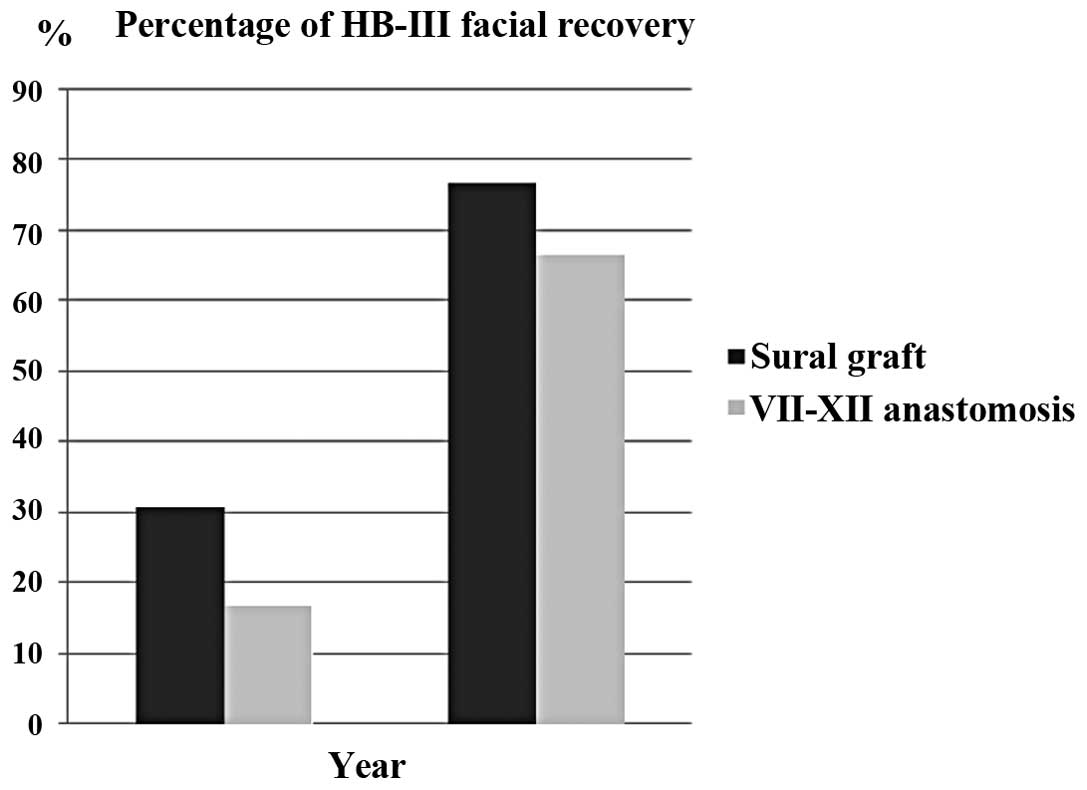|
1.
|
Theodosopoulos PV and Pensak ML:
Contemporary management of acoustic neuromas. Laryngoscope.
121:1133–1137. 2011. View Article : Google Scholar : PubMed/NCBI
|
|
2.
|
Falcioni M, Fois P, Taibah A and Sanna M:
Facial nerve function after vestibular schwannoma surgery. J
Neurosurg. 115:820–826. 2011. View Article : Google Scholar : PubMed/NCBI
|
|
3.
|
Han SJ, Oh MC, Sughrue ME, Aranda D,
Rutkowski MJ and Parsa AT: Reporting standard compliance in
publications of vestibular schwannoma patients treated with
microsurgery. Otol Neurotol. 33:648–650. 2012. View Article : Google Scholar : PubMed/NCBI
|
|
4.
|
Giordano AI, Domènech I, Torres A, et al:
Results in the surgical treatment of giant acoustic neuromas. Acta
Otorrinolaringol Esp. 63:194–199. 2012.(In Spanish).
|
|
5.
|
Bambakidis NC, Lo SS and Selman WR: Large
vestibular schwannomas. J Neurosurg. 115:894–895. 2011. View Article : Google Scholar : PubMed/NCBI
|
|
6.
|
Nuseir A, Sequino G, De Donato G, Taibah A
and Sanna M: Surgical management of vestibular schwannoma in
elderly patients. Eur Arch Otorhinolaryngol. 269:17–23. 2012.
View Article : Google Scholar : PubMed/NCBI
|
|
7.
|
Ahmad RA, Sivalingam S, Topsakal V, Russo
A, Taibah A and Sanna M: Rate of recurrent vestibular schwannoma
after total removal via different surgical approaches. Ann Otol
Rhinol Laryngol. 121:156–161. 2012. View Article : Google Scholar : PubMed/NCBI
|
|
8.
|
Ben Ammar M, Piccirillo E, Topsakal V,
Taibah A and Sanna M: Surgical results and technical refinements in
translabyrinthine excision of vestibular schwannomas: the Gruppo
Otologico experience. Neurosurgery. 70:1481–1491. 2012.PubMed/NCBI
|
|
9.
|
Mamikoglu B, Esquivel CR and Wiet RJ:
Comparison of facial nerve function results after translabyrinthine
and retrosigmoid approach in medium-sized tumors. Arch Otolaryngol
Head Neck Surg. 129:429–431. 2003. View Article : Google Scholar : PubMed/NCBI
|
|
10.
|
Kim J, Moon IS, Jeong JH, Lee HR and Lee
WS: What really decides the facial function of vestibular
schwannoma surgery? Clin Exp Otorhinolaryngol. 14:168–173. 2011.
View Article : Google Scholar : PubMed/NCBI
|
|
11.
|
Gerganov VM, Giordano M, Samii M and Samii
A: Diffusion tensor imaging-based fiber tracking for prediction of
the position of the facial nerve in relation to large vestibular
schwannomas. J Neurosurg. 115:1087–1093. 2011. View Article : Google Scholar : PubMed/NCBI
|
|
12.
|
Charpiot A, Tringali S, Zaouche S,
Ferber-Viart C and Dubreuil C: Perioperative complications after
translabyrinthine removal of large or giant vestibular schwannoma:
Outcomes for 123 patients. Acta Otolaryngol. 130:1249–1255. 2010.
View Article : Google Scholar
|
|
13.
|
Angeli RD, Ben Ammar M and Sanna M:
Perioperative complications after translabyrinthine removal of
large or giant vestibular schwannoma: outcomes for 123 patients.
Acta Otolaryngol. 131:1237–1238. 2011.
|
|
14.
|
Collen C, Ampe B, Gevaert T, et al: Single
fraction versus fractionated linac-based stereotactic radiotherapy
for vestibular schwannoma: a single-institution experience. Int J
Radiat Oncol Biol Phys. 81:e503–e509. 2011. View Article : Google Scholar
|
|
15.
|
Friedman RA, Berliner KI, Bassim M, et al:
A paradigm shift in salvage surgery for radiated vestibular
schwannoma. Otol Neurotol. 32:1322–1328. 2011. View Article : Google Scholar : PubMed/NCBI
|
|
16.
|
Gerganov VM, Giordano M, Samii A and Samii
M: Surgical treatment of patients with vestibular schwannomas after
failed previous radiosurgery. J Neurosurg. 116:713–720. 2012.
View Article : Google Scholar : PubMed/NCBI
|
|
17.
|
Hertzano R and Eisenman DJ: Large,
symptomatic tension pneumocele: 23 years after translabyrinthine
resection of an acoustic neuroma. Otolaryngol Head Neck Surg.
144:477–478. 2011.PubMed/NCBI
|
|
18.
|
Guntinas-Lichius O, Straesser A and
Streppel M: Quality of life after facial nerve repair.
Laryngoscope. 117:421–426. 2007. View Article : Google Scholar : PubMed/NCBI
|
|
19.
|
Samii M, Koerbel A, Safavi-Abbasi S, Di
Rocco F, Samii A and Gharabaghi A: Using an end-to-side interposed
sural nerve graft for facial nerve reinforcement after vestibular
schwannoma resection. Technical note. J Neurosurg. 105:920–923.
2006. View Article : Google Scholar : PubMed/NCBI
|
|
20.
|
Humphrey CD and Kriet JD: Nerve repair and
cable grafting for facial paralysis. Facial Plast Surg. 24:170–176.
2008. View Article : Google Scholar : PubMed/NCBI
|
|
21.
|
Magliulo G, D’Amico R, Forino M and
Marcotullio D: Facial reanimation: a proposal to reduce
postoperative morbidity. Laryngoscope. 112:183–186. 2002.
View Article : Google Scholar : PubMed/NCBI
|
|
22.
|
Filipo R, Spahiu I, Covelli E, Nicastri M
and Bertoli GA: Botulinum toxin in the treatment of facial
synkinesis and hyper-kinesis. Laryngoscope. 122:266–270. 2012.
View Article : Google Scholar : PubMed/NCBI
|















